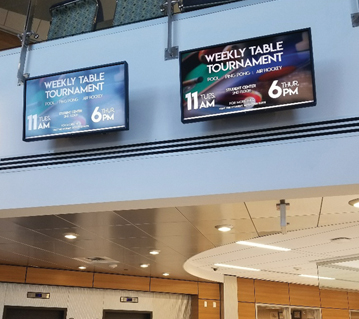COVID-19 has had an immediate and far-reaching impact on the way the world of work, school, and public service operates. After months of lockdown, restrictions are starting to be eased, but the coronavirus will continue to have an enduring impact on life beyond our homes going forward. It has become abundantly clear that remote working, social distancing, and a rethink of how offices and public spaces are being used and run will redefine what is "normal" for a long time to come.
Now, as more people around the globe begin to filter back to their workplaces, and schools begin to open and welcome students back, the reality is many organizations are reconsidering their physical environments as they look at what’s coming next as well as their long-term futures. For many, IP video-based technologies have become absolutely critical. Whether it is a global enterprise with a scattered workforce, a hospital striving to keep both staff and patients safe, or an educational institution that needs to enable learning from a safe distance, digital signage and streaming video will play an increasingly bigger role.
It is key to ensuring the secure delivery of content to any device and facility-wide screens, as organizations provide communications on safety guidelines and hygiene policies, including information on the use of meeting rooms, common areas, restrooms, and other shared facilities—as well as signposting of one-way systems and exits.
Companies operating in banking and finance provide good examples of the use and importance of IP-based technology for effective communications. IPTV has been employed by many businesses in this sector because it enables live and on-demand streaming of numerous TV channels, meetings, presentations, and briefings across multiple rooms or even disparate offices to ensure employees are up to date with the latest news and announcements.
[The Integration Guide to AV in a Post-COVID-19 World]
For instance, Thomson Reuters—a leading source of news and information for professionals in the financial services, media, and corporate markets—has an IP video system that delivers broadcast-quality TV and video to over 300 displays in conference rooms and lecture theaters, as well as 2,500 screens and desktops around its London headquarters. This enables staff to keep up to speed with the latest news around the world as events, such as critical developments related to coronavirus, unfold in real time—as well as recorded and internal content.

Other organizations facing pressure to reopen safely as soon as possible include schools and universities. Effectively communicating social distancing, hand sanitization, traffic flow, classroom and lecture theatre changes, and other safety measures to students across campuses will be essential as educational institutions reopen. Important information in the form of eye-catching graphics and text, complemented by videos or live TV, can be displayed on signage screens throughout the campus. The New England Institute of Technology is a prime example of how an integrated IP video and digital signage system improves communication, with live TV and video channels delivered directly to students’ residences, as well as digital signage in communal areas throughout the campus.
Digital signage and IP video can underpin communications for organizations aiming to maintain a ‘business as usual’ approach during the coronavirus pandemic—and this will continue to be the case even as it subsides. Employees have had to very quickly change working habits, but what the long-term impact will be remains uncertain. What is clear is that, for both those working remotely and those who must return to onsite working, IP technology plays a vital role in ensuring people feel confident, comfortable and effectively communicated to as the world continues to adapt to the COVID-19 era.
